AFGHANISTAN
Kabul

Kabul
Kabul
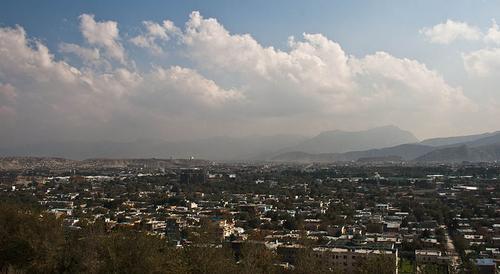 KabulPhoto: James Solly CC 2.0 Generic no changes made
KabulPhoto: James Solly CC 2.0 Generic no changes made
Kabul is the capital and largest city of Afghanistan and also the capital of Kabul province. Kabul is located in the eastern part of Afghanistan. In 2011, the population of the Kabul metropolitan area is 3,900,000. It is the country's economic and cultural center, located in a narrow valley between the Hindu Kush Mountains and the Kabul River.
Kabul lived on the export of fresh and dried fruits, nuts, Afghan carpets, leather and sheepskin, clothing and furniture. The economy has deteriorated since 1978 when the country became involved in several wars. From 2001 onwards, the government has gradually improved economic productivity. The city of Kabul is one of the 15 districts of Kabul province, which is further divided into 18 boroughs or sectors. Each district consists of different neighborhoods.
Location
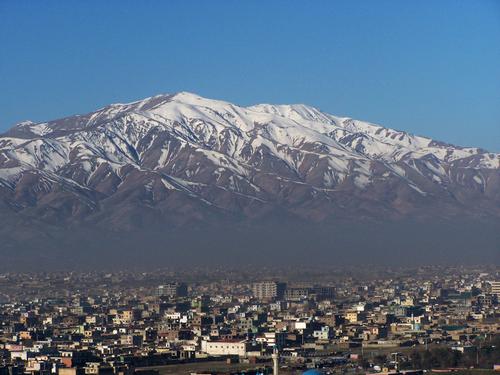 Kabul with Hindu Kush mountains in the backgroundPhoto: Joe Burger (CC BY 2.0) no changes made
Kabul with Hindu Kush mountains in the backgroundPhoto: Joe Burger (CC BY 2.0) no changes made
The coordinates of Kabul are: 34° 31'59' North latitude and 69° 09'58' East longitude. Kabul is located at 1,800 meters above the sea level, making it one of the world's highest capitals. The city occupies a strategic position at the crossroads of the north-south and east-west trade routes in a valley surrounded by high mountains. Kabul is surrounded by the Koh-e Paghman in the east, the Koh-e Qrough in the southwest and the Koh-e Shirdarwaza in the northeast. There is only one river, the Kabul River, which has its source at the Paghman. The river flows east, past Kabul, through Jalalabad and then to Dhaka where the river in Pakistani territory finally flows into the Indus at Attock. Kabul has an area of 275 km², the metropolitan area extends over 425 km².
Weather
Kabul has a dry to semi-steppe climate. Precipitation is rare, especially from May to November when Kabul becomes very dry and dusty. Precipitation is limited to winter (sometimes as snow) and spring. Extreme temperature fluctuations occur between night and day and from season to season. The climate of Afghanistan is characterized by blue skies without clouds and more than 300 days of sunshine a year. Even during the winter, the sky usually remains clear in between snowfalls. The temperature in winter can drop from -15° to -20° degrees Celsius and in summer the temperature is between 15° to 30° C. The coldest month of the year is January with an average temperature of -12° C and the hottest month is July with an average of 25° C. Temperatures are relatively low due to the high altitude of the city. In the summer there is a very low humidity, which makes the heat bearable. Spring is pleasant and wet. The sun shines all year round with an average of 3177 hours.
History
The city's history dates back to more than 3,000 years ago. Kabul was once a center of the new religion preached by Zoroaster and later a home for Buddhist and Hindu kings. In the 7th century, Arab Muslims conquered the area and introduced Islam. Then they were defeated by the Hindu Shahi dynasty. Kabul was again conquered by the Saffarids and Samanids in the 9th century, followed by Mahmud of Ghazni in the 11th century. Later the Mongols attacked the area under Genghis Khan.
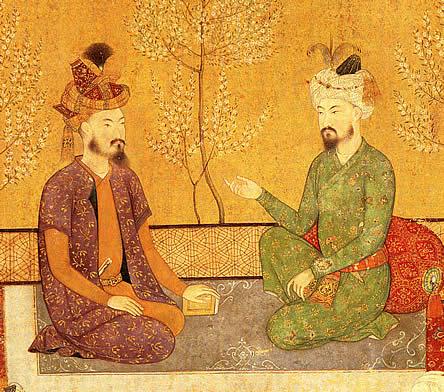 Timurid Rulers of KabulPhoto: Public domain
Timurid Rulers of KabulPhoto: Public domain
In the 14th century, the area around Kabul was conquered by Timur, founder of the Timurid dynasty, the city developed as an important trading center. At that time different tribes lived in the city. For a long time, Kabul was independent until it became part of the Durrani Empire in 1747.
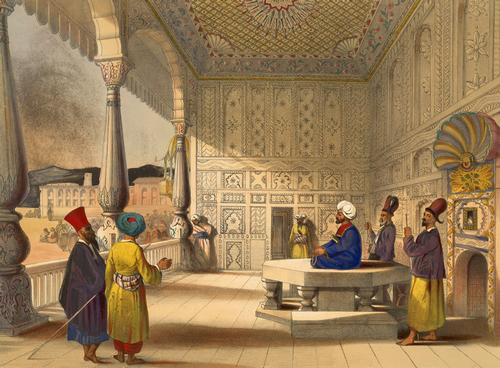 Pallace in Kabul in 1848Photo: Public domain
Pallace in Kabul in 1848Photo: Public domain
The British attacked the area during the First Anglo-Afghan War in 1839, but had to withdraw with heavy losses in 1842. The British soldiers partly destroyed Kabul before retreating to British India. Kabul was occupied again by British forces during the Second Anglo-Afghan War in 1879, but they left about a year later when Emir Abdur Rahman Khan came to power. In 1919 there was the Third Anglo-Afghan War. That year, the eastern city of Jalalabad was bombed by the British Royal Air Force in May. Amanullah Khan defeated the British and after signing the Treaty of Rawaldipindi, he began to modernize the country.
In the 1960s and 1970s Kabul looked like a kind of European city, it became a prosperous and modern capital and was called the Paris of Central Asia. At the time, Kabul had everything a modern capital has: modern cinemas, cafeterias, formal gardens, schools, libraries, universities, beautiful shops. The people of Kabul were highly educated, modern, progressive and cosmopolitan. Both men and women attended primary school, secondary school and college.
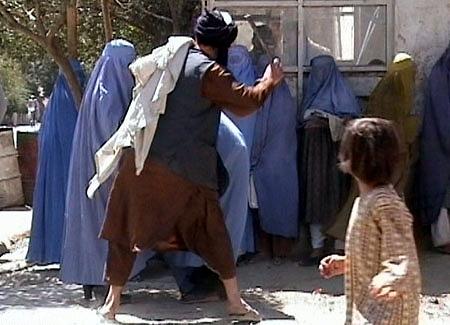 Taliban religious police beat woman in public in KabulPhoto: Rawa CC 3.0 no changes made
Taliban religious police beat woman in public in KabulPhoto: Rawa CC 3.0 no changes made
Due to the interference of the Soviet armed forces in the late 1970s, the progressive and peaceful society disappeared and the city changed. The Soviet troops had a command center in Kabul. In February 1989, Soviet forces withdrew from Afghanistan after being defeated by the Mujahedeen. In the spring of 1992, Kabul fell to the Mujahedeen. Various warring factions were in constant conflict. In 1996 the Taliban took over the region and introduced strict Islamic Sharia law. This restricted most education, entertainment, and forbade working for women and shaving beards for men.
In October 2001, United States armed forces assisted by the British armed forces during Operation Enduring Freedom took Kabul. The Taliban left Kabul and the United Front took control of the city. In December 2001, Kabul became the capital of the Afghan transitional government, which was later transformed into the current government of Afghanistan. Kabul is still unsettled and dangerous.
The population of the city has grown from about 500,000 in 2001 to over 3 million in 2007. Many foreign embassies have reopened, especially the large US embassy. Afghan government agencies were established and modernized. The newly trained Afghan National Police and the Afghan National Army are in charge of security in the area.
Sights
The biggest tourist attraction is the old part of Kabul with its many bazaars in narrow, winding streets.
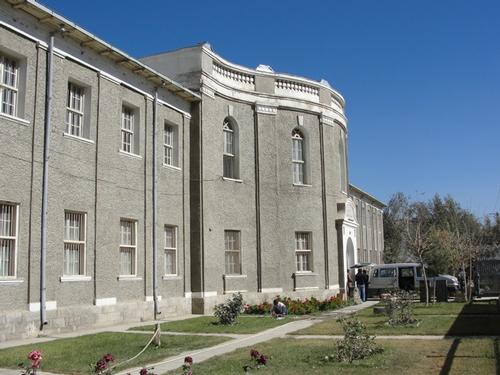 National Museum in KabulPhoto: Michal Hvorecky CC 2.0 Generic no changes made
National Museum in KabulPhoto: Michal Hvorecky CC 2.0 Generic no changes made
Cultural attractions include: the National Museum of Afghanistan, the ruin of the Darul Aman Palace, the tomb of the Mughol Emperor Babur in Bagh-e Babur and Chehlstoon Park, the Minar-i-Istiqlal (Independence Column), built in 1919 after the Third Afghan War, the Mausoleum of Timur Shah Durrani and the imposing Id Gah Mosque (established 1893).
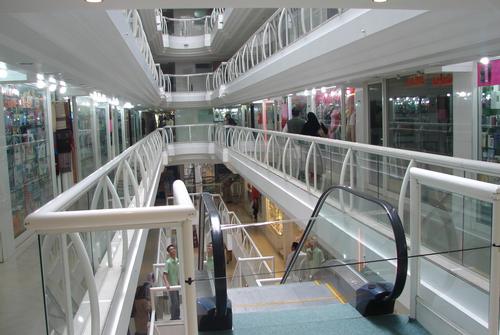 Shopping center in KabulPhoto: Aryob Zazai CC 2.0 Generic no changes made
Shopping center in KabulPhoto: Aryob Zazai CC 2.0 Generic no changes made
Other attractions include the first shopping center in Kabul, the shops around Flower Street and Chicken Street, the Wazir Akbar Khan district, the Kabul Zoo, the National Gallery of Afghanistan, the National Archives of Afghanistan, the mausoleum of the Afghan Royal Family and the Paghman Gardens.
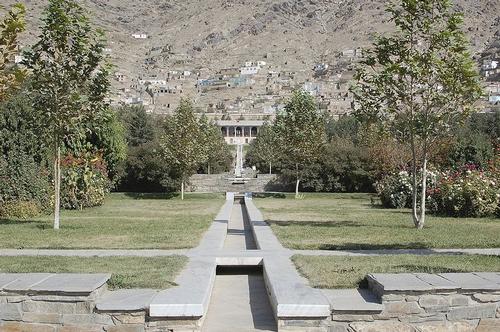 Gardens of Babur in KabulPhoto: Jim Kelly CC 2.0 Unported no changes made
Gardens of Babur in KabulPhoto: Jim Kelly CC 2.0 Unported no changes made
Outside the city itself there is a citadel and the royal palace. There are beautiful parks in Kabul: Bagh-e Babur (Gardens of Babur), Baghi Bala Park, Zarnegar Park, Shar-e Naw Park, Bagh-e Zanana, Bibi Mahro Park and Lake Qargha.
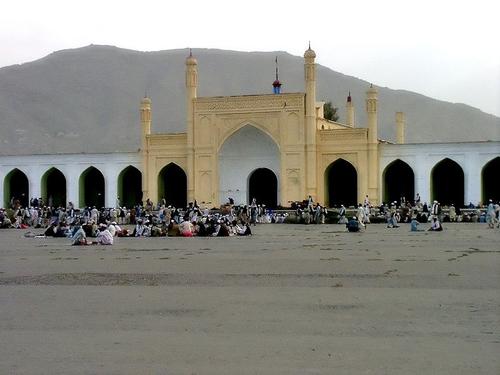 Id Gah Mosque in KabulPhoto: KevinScott at the English language wikipedia CC 3.0 no changes made
Id Gah Mosque in KabulPhoto: KevinScott at the English language wikipedia CC 3.0 no changes made
The famous Mosques are: Abdul Rahman Mosque, Id Gah Mosque, Blue Mosque, Pul-e Khishti Mosque and Shah-Do Shamshira Mosque.
Tips
A trip to Kabul is not for everyone and also dangerous. It's something for the very adventurous travelers at the moment, but maybe the tide is turning. It is advisable to keep a close eye on the travel advice from the Ministry of Foreign Affairs.
Useful links Kabul
BBC Country ProfilesWorld Fact Book Explore all Countries
How to call
Last updated November 2025
Copyright: Team - The World of Info